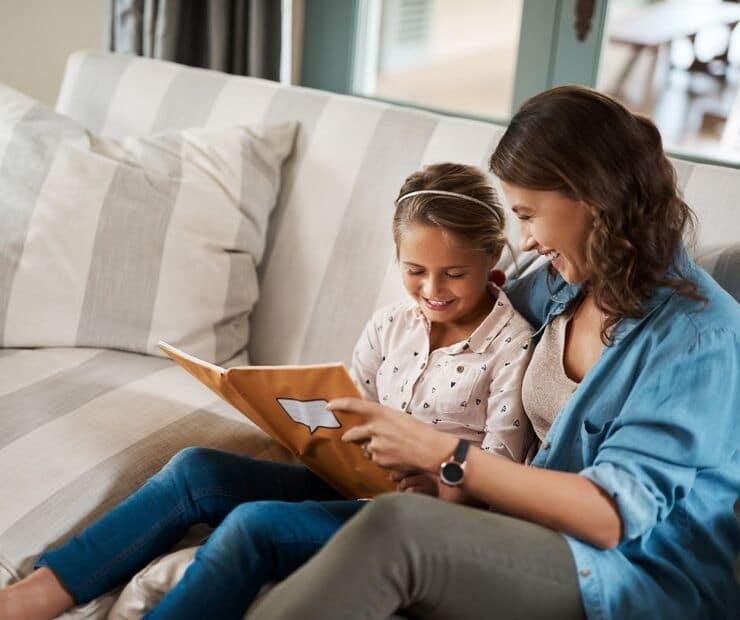
Parents have a superpower to spark imagination and creativity in kids early on. Children’s most impressionable years fall between birth through age six. Reading to your child during this time has tremendous value. Reciting your favorite stories, like Jabberwocky by Lewis Carroll, begins the journey of early childhood development. Not only does a child bond with parents, but parents also build better, stronger bonds with the child. The stimulation of reading engaging stories full of nonsense goes both ways. Even if kids do not understand the words, they sense your excitement.
Parents often turn to lullabies to calm fussy babies down, and singing plays a developmental role. How many of us can still sing, “Hush Little Baby?” The earlier you read to your children, the better, as your voice soothes them. Expectant mothers can even start interacting with their pre-born infants during pregnancy. The book, While You Are Expecting: Your Own Prenatal Classroom has in-utero exercises.
Reading strengthens cognitive development, creativity, and imagination. Storytime also enhances young children’s social, emotional, and language skills. You do not have to limit yourself to traditional books. Make up your own stories and get the kids to help craft a new story or tell stories or rhymes handed down in the family. Include age-appropriate religious stories (for example, the Bible or Torah), Dr. Seuss, and rich traditional literature. Ask your local librarian or bookstore for recommendations.
You can also use songs, storytelling, or illustrated picture books to engage your children. Also, incorporating nursery rhymes encourages learning. Toddlers positively react to catchy nursery rhymes because the repetition helps develop memory. Can Mother Goose Come Down to Play? has nursery rhymes we all know and love. Before you know it, young children will start reciting the classic rhythmic verses. Storytime does not only have to take place during bedtime. Parents can read, sing, or rhyme at any time and make it a daily routine.
Reading aloud to young children has other positive impacts.
- Love of Reading: Engaging with your child at an early age develops a love of reading. As they grow older, they will begin to read books on their own and enjoy them. If you use rhymes, children will grow to appreciate poetry and other catchy phrases.
- Curiosity: Children who have parents that read to them become more inquisitive. They will want to know and explore more beyond their surroundings. Your child will start asking questions about things. Sometimes every answer has a follow-up with “why?” It may drive you nuts, but it marks developmental milestones.
- Vocabulary: Parent involvement helps develop broad vocabularies in children that will continue to flourish. They will use and learn more words, furthering their communication, language, and literacy skills.
- Concentration: Telling stories to young children keeps them focused and interested. Reading enhances a child’s attention and develops self-discipline.
- Comprehension: Children will be able to learn about different cultures and better understand uniquity. Reading also helps a child associate their emotions with events in stories. Books also help young children be able to identify reality versus imaginary.
Make reading a memorable family affair. You do not have to reserve these activities to only one parent and child. If possible, involve both parents, other children, and even grandparents. Who doesn’t love to hear tales that begin with, “when I was your age?” Your child will remember these special moments throughout their life. You can even add dance to songs to sharpen children’s motor skills and liven things up. Also, introducing fingerplays to spoken words helps learning and development. The book Fingerplays and Rhymes by Terry Lynne Graham engages everyone with rhythmic verses and movements.
For more benefits and tips about reading to children, visit this Australian parenting website. We also have written a blog on Encouraging Young Readers.
Generations have loved and shared the classic and timeless children’s literature book Goodnight Moon. This book was first published in 1947 and written by Margaret Wise Brown.
